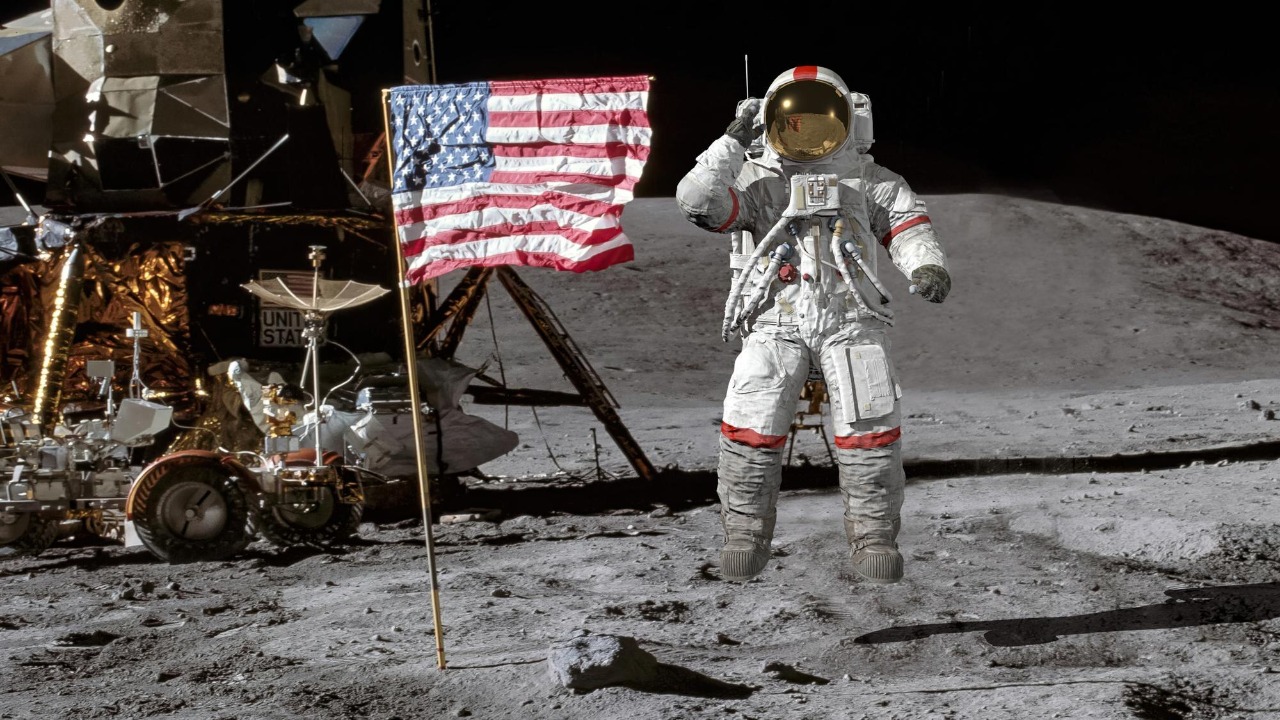
Despite the monumental achievement of the 1969 Moon landing, a persistent cloud of skepticism continues to cast a shadow over this historic event. This enduring doubt has been recently fueled by high-profile figures like Kim Kardashian and Joe Rogan, who have publicly endorsed conspiracy theories questioning the authenticity of the Moon landing.
Origins of the Conspiracy Theories
The seeds of these conspiracy theories were sown in the late 1960s and early 1970s, a period marked by Cold War tensions and the competitive space race. Skepticism was further fueled by Bill Kaysing’s 1976 book “We Never Went to the Moon,” which popularized early claims of a NASA-staged hoax. This initial wave of doubt was rooted in a broader distrust of government institutions, a sentiment that was prevalent during this era. Academic analysis has traced the origins of these theories and their connection to societal distrust.
Key Visual Anomalies Cited by Skeptics
Conspiracy theorists often point to certain visual anomalies as evidence of a staged Moon landing. One such anomaly is the American flag appearing to wave in the vacuum of space, which skeptics interpret as evidence of wind on a studio set. Additionally, they cite inconsistencies in shadows and lighting in the Moon landing photos, suggesting these were caused by artificial studio light sources rather than sunlight. The lack of stars in the images is also argued as proof of a darkened soundstage.
Technical and Logistical Doubts
Technical and logistical aspects of the Moon landing have also been questioned. Skeptics have raised concerns about the Van Allen radiation belts, which they claim would have been lethal to the Apollo 11 crew without adequate shielding. The design and landing of the Lunar Module have also been scrutinized, with critics pointing to alleged dust patterns inconsistent with a vacuum. These persistent theories have been explored in reporting on why so many still think the moon landings were faked.
Celebrity and Media Amplification
The role of celebrities and media in amplifying these conspiracy theories cannot be overlooked. In 2025, Kim Kardashian publicly endorsed the hoax theory, reaching millions of her followers via social media. Around the same time, podcaster Joe Rogan questioned NASA’s evidence and suggested alternative explanations on his show. The endorsement of these theories by such influential figures lends credibility to fringe ideas and draws in younger audiences who may be skeptical of official narratives.
Societal and Psychological Factors
There are also societal and psychological factors that contribute to the persistence of these conspiracy theories. Events like the Watergate scandal and the Vietnam War have fostered a climate of distrust in authority, which in turn has nurtured beliefs in the 1969 hoax. The role of confirmation bias, where believers seek out debunked “proof” that aligns with their worldview, also plays a significant part. University insights have shed light on why moon landing conspiracy theories persist today.
Modern Revival Through Digital Platforms
Digital platforms have played a crucial role in the modern revival of these conspiracy theories. Social media algorithms often amplify conspiracy content, sustaining doubts about the 1969 landing into the present day. YouTube videos and online forums recycle old claims, often ignoring scientific rebuttals. Recent events, like delays in the Artemis program, have also reignited skepticism in online communities.
Counterarguments and Their Limited Effect
Despite numerous counterarguments, these conspiracy theories persist. Common debunkings include the minimal radiation exposure due to the spacecraft’s trajectory and short duration, and the explanation of photographic evidence by lunar conditions. However, skeptics often dismiss these debunking efforts. The failure of factual rebuttals to sway believers ties back to the emotional and ideological appeals of these theories.
More from MorningOverview